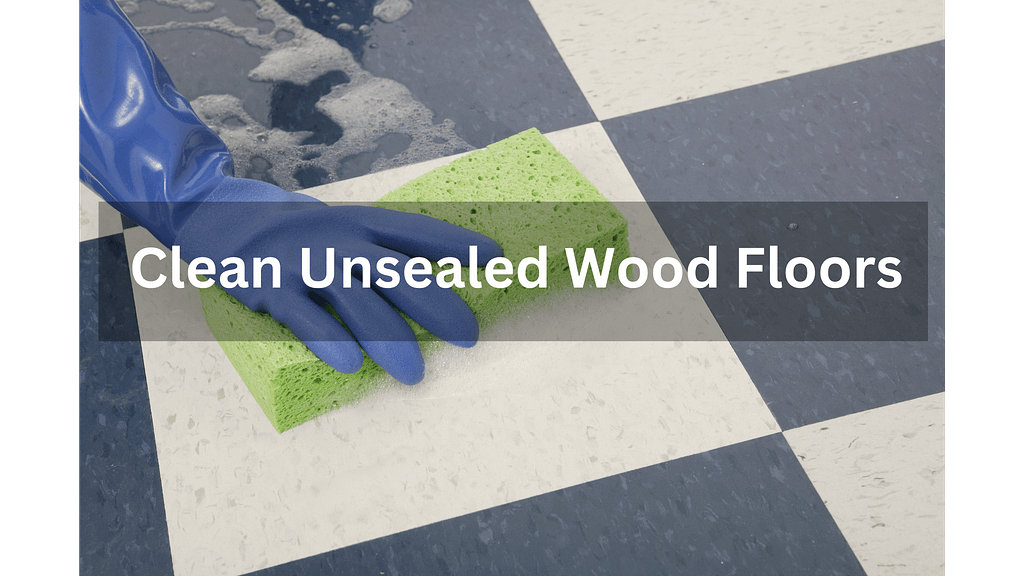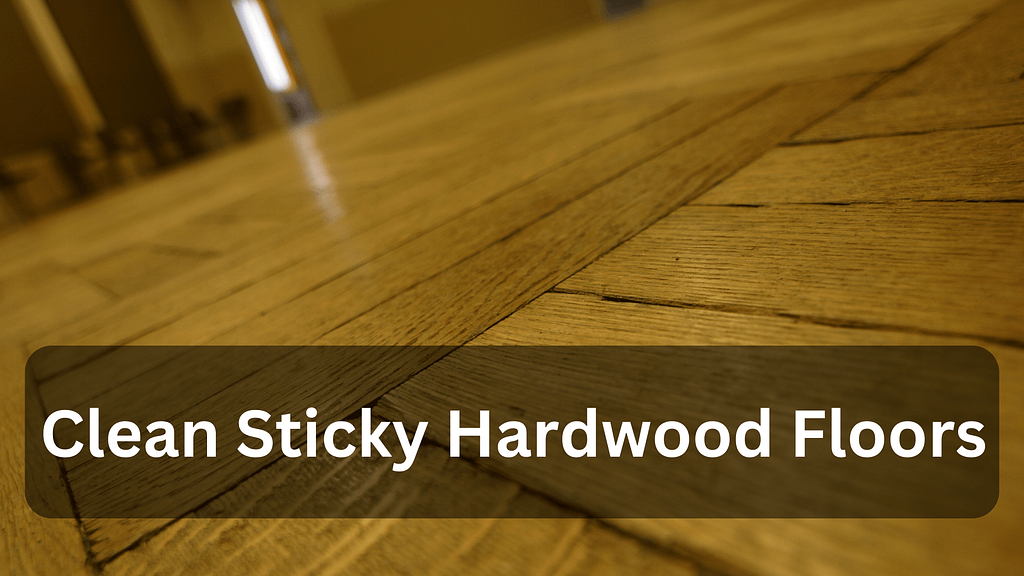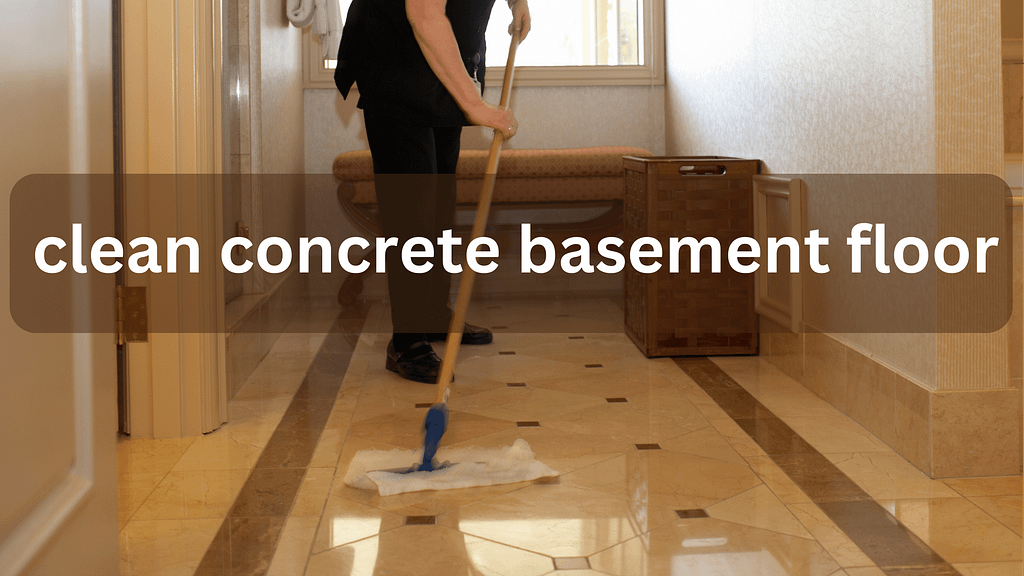Ground water can be a frustrating problem, especially when they cause water damage to your basement. Whether it’s a clogged shower drain, a clogged basement, or a clogged garage, a clogged floor can quickly ruin your home. That’s why it’s so important to know how to clean your floor properly.
Regular cleaning and maintenance of the basement is important to prevent blockages and water damage in the basement. By understanding the physical nature of water on the floor and the potential problems that may cause a blockage, you can better identify and solve the problem. Having the right equipment, such as a hose and rubber gloves, is also important for cleaning your floor properly.
In this DIY guide, we’ll give you step-by-step instructions on how to clean your floor drain and prevent future clogs. From preparing your work area to using hand-washing techniques, you’ll learn everything you need to keep your groundwater clean. So let’s get started and make sure your water base is clean and working properly.

Key Highlights
- Regular cleaning and maintenance of your floor drain is essential to prevent clogs and water damage to your basement floor.
- Understanding the anatomy of a floor drain and common issues can help you identify and address clogs more effectively.
- Having the right tools, such as a drain auger and rubber gloves, is crucial for effectively cleaning your floor drain.
- Following a step-by-step guide, including preparing your work area, removing the drain cover, and using manual cleaning techniques, can help you clean your floor drain effectively.
- It’s important to prevent future clogs by maintaining your drain regularly and being mindful of what goes down your drains.
Understanding Clean Floor Drains and Common Issues

Floor drains are important in many homes, especially in basements and garages. It is designed to collect and remove excess water and prevent it from damaging your property. However, over time, the water on the floor can become clogged, causing problems such as waterlogging and odor.
One of the main causes of clogged floors is hair and debris buildup in drains. Hair, dust, pet dander, and other items from showering or bathing can build up in drains and clog them. Soap scum and mineral deposits on bath products can cause clogging. Additionally, small particles such as dirt, sand, rust, and dirt can settle at the bottom of your pipes if they are not cleaned regularly.
Read More DIY Floor Cleaner Recipe with Vinegar & Water
Tree roots are another cause of soil clogging. Fine hair follicles can penetrate cracks in the pipes and cause blockages. Oil, grease and oils spilled into your kitchen sink can cause the water to freeze. Sometimes large objects such as toys or towels can fall into the well and cause blockages.
Regular cleaning and maintenance of your floor drain can help prevent these common issues and ensure that your drains function properly.
The Anatomy of a Floor Drain
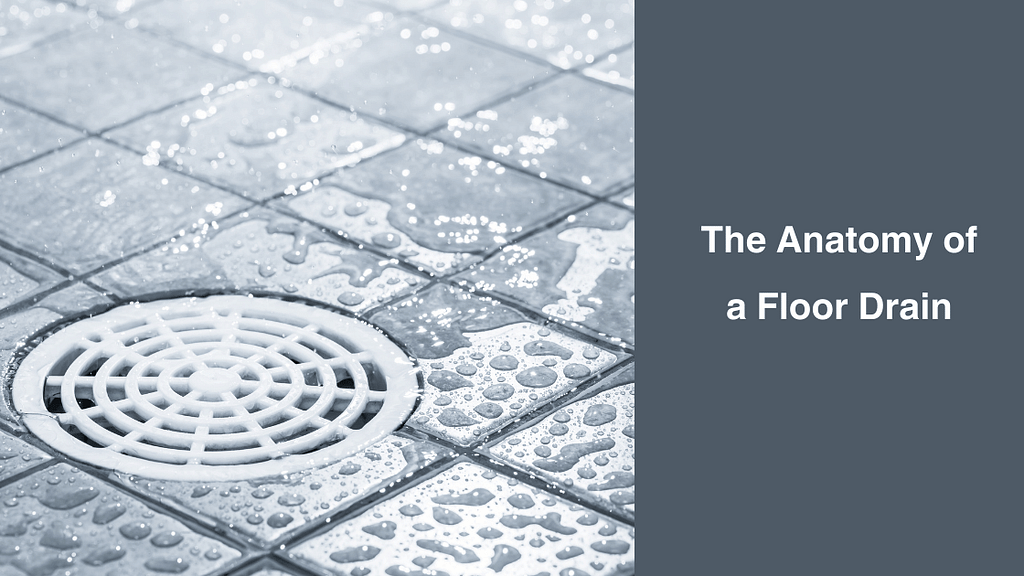
To obtain a good waterproof floor, it is important to understand its structure. The water floor consists of pipes connected to water pipes. It is often found on the floor of a basement or garage, where water can accumulate and cause damage.
Pipes connect to the sewer system and carry waste and wastewater out of your home. Sewage is an important part of the water system as it ensures the safe disposal of waste. It is important to keep drains and pipes clean to maintain water quality.
In addition to pipes and drains, the water floor also contains pipes or grates that prevent large objects from entering the drain. These covers can be removed for cleaning and inspection. Understanding the different types of water on the ground will help you perform a more efficient cleaning operation.
Reasons Behind Clogged Floor Drains
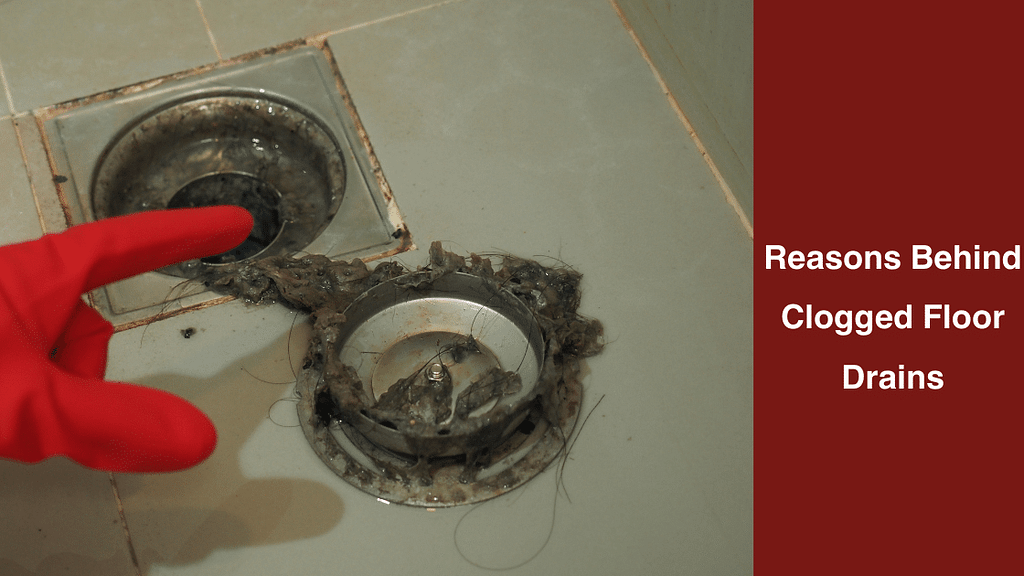
There are many reasons why ground water becomes clogged over time. One of the main reasons for this is hair and debris buildup in your pipes. Hair, dust, pet dander, and other products from showering or bathing often end up in drains. Soap scum and hard mineral deposits accumulated in bathroom products can cause blockages in your drains. Small particles such as dirt, sand, rust and grime from normal water use can settle at the bottom of the pipes if not removed.
Read More Clean Floor Grout Between Tiles
Tree roots are another culprit, as fine root hairs can penetrate the outside of the drain. Oil, grease and oils spilled into your kitchen sink can cause the water to freeze. Sometimes large items such as toys or towels can clog the drain.
Additionally, ageing cast iron or clay drainage pipes underneath homes are susceptible to corrosion and cracking over decades, allowing tree roots to exploit openings and spread. Proper preventative drain maintenance helps reduce clogs, but blockages can still occur even with regular cleaning.
Essential Tools for Cleaning Your Floor Drain
Having the right tools is crucial for effectively cleaning your floor drain. Here are some essential tools you should have on hand:
- Drain auger: Also known as a plumber’s snake, a drain auger is a flexible wire tool that can be used to break up clogs in your drain pipes.
- Rubber gloves: Protect your hands while cleaning your floor drain by wearing rubber gloves. These gloves will prevent any bacteria or debris from coming into direct contact with your skin.
- Dry vacuum: A wet or dry vacuum can be used to remove any standing water in your cleared drains, making the cleaning process more efficient.
By having these essential tools, you’ll be equipped to tackle any clogs or maintenance tasks related to your floor drain.
Basic Tools Every Homeowner Should Have
Apart from the essential tools mentioned above, there are some basic tools that every homeowner should have to address common drain issues. These tools include:
- Plunger: A plunger is a useful tool for all types of drain issues. It uses water pressure created by quick up and down motions to break up clogs in sinks, tubs, or floor drains.
- Garden hose: A garden hose can be helpful for flushing out any debris or sediment that may be causing a clog. By inserting the hose into the drain and running water at high pressure, you can dislodge any obstructions.
- Bucket of water: A bucket of water is a simple yet effective tool for testing the drainage of your floor drain. By pouring water into the drain and observing how quickly it drains, you can determine if there are any clogs that need to be addressed.
Having these basic tools on hand will allow you to handle minor drain issues and perform regular maintenance tasks.
Specialized Equipment for Tough Clogs
For tougher clogs that cannot be easily cleared with basic tools, there are specialized pieces of equipment that can help. These include:
- Drain snake: A drain snake, also known as a plumber’s snake, is a flexible coiled wire with a grabber or brush attachment at the end. It is used to pull hair and debris out of clogged pipes. Drain snakes are especially effective for removing blockages that are deeper in the pipe system.
- Sump pump: A sump pump is a device that is used to remove water that has accumulated in a sump basin. It is commonly used in basements to prevent flooding and water damage. If your floor drain is connected to a sump pump, it’s important to ensure that the pump is in good working condition.
- Strong pumps: In some cases, strong pumps may be required to clear tough clogs or remove excess water from a floor drain. These pumps are typically used by professional plumbers and should be handled with care.
By having access to these specialized pieces of equipment, you’ll be prepared to tackle even the toughest clogs in your floor drain.
Step-by-Step Guide to Cleaning Your Floor Drain
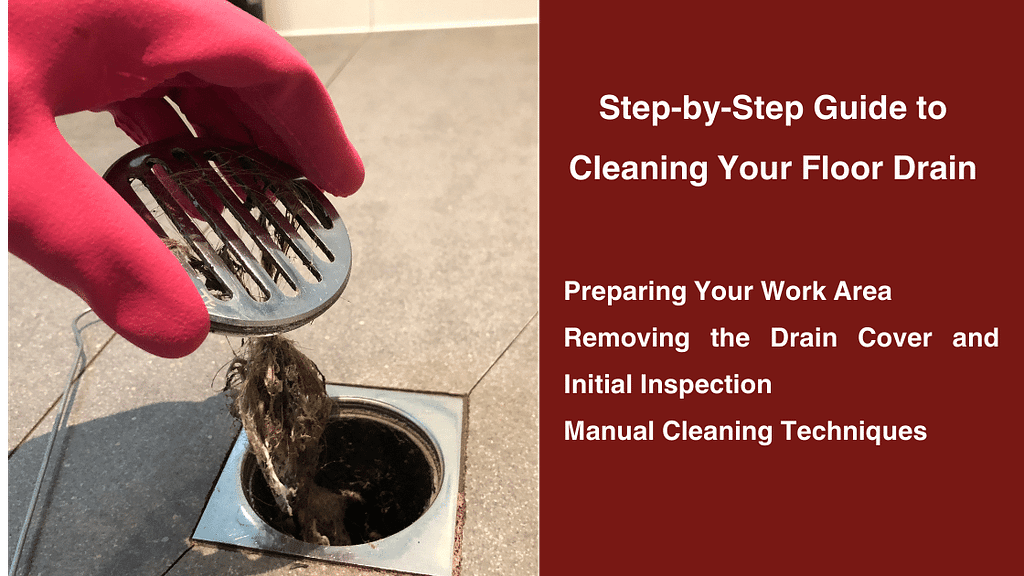
Cleaning your floor drain doesn’t have to be a daunting task. By following a step-by-step guide, you can effectively clean your floor drain and prevent future clogs. Here is a step-by-step guide to help you through the process:
- Preparing your work area: Before you begin cleaning your floor drain, ensure that you have a safe and clean work area. This may involve removing any items or debris that may obstruct your access to the drain.
- Removing the drain cover and initial inspection: Start by removing the drain cover using a screwdriver or other appropriate tool. Inspect the drain opening for any visible debris or clogs.
- Manual cleaning techniques: Use manual cleaning techniques, such as using a wire brush or a small bottle brush, to remove any visible debris or buildup in the drain. Wear rubber gloves to protect your hands during this process.
- Flushing the drain: Flush the drain with a bucket of water or a garden hose to remove any remaining debris. This will help ensure that the drain is clear and free-flowing.
By following these steps, you can effectively clean your floor drain and maintain its functionality.
Preparing Your Work Area
Before you start cleaning your floor drain, it’s important to prepare your work area to ensure your safety and make the process more efficient. Here are some steps to follow when preparing your work area:
- Ensure safety: Before working on your floor drain, turn off the water supply to prevent any accidental flooding. It’s also a good idea to wear rubber gloves to protect your hands from any debris or bacteria.
- Clear the area: Remove any items or obstacles that may be blocking your access to the floor drain. This will make it easier to clean and inspect the drain.
- Gather your tools: Make sure you have all the necessary tools and supplies, such as a screwdriver, wire brush, and a bucket of water or garden hose, within easy reach.
By taking the time to prepare your work area, you can ensure that the cleaning process goes smoothly and safely.
Removing the Drain Cover and Initial Inspection
To begin the cleaning process, you’ll need to remove the drain cover and inspect the drain opening for any visible debris or clogs. Here’s how:
- Use a screwdriver or other appropriate tool to remove the drain cover. Some drain covers may be secured with screws, while others can be easily pried out.
- Once the drain cover is removed, take a close look at the drain opening. Check for any visible debris, such as hair or sediment, that may be causing a clog.
- In older homes, the drain cover may be more challenging to remove due to rust or corrosion. Use a wire brush or a small bottle brush to clean the area around the drain opening and gently loosen any debris.
By removing the drain cover and inspecting the drain opening, you can get a better idea of the condition of your floor drain and determine the next steps for cleaning.
Manual Cleaning Techniques
Manual cleaning techniques can be effective in removing visible debris or buildup in your floor drain. Here are some techniques to consider:
- Use a wire brush or a small bottle brush to scrub the drain opening and remove any debris or sediment.
- Wear rubber gloves to protect your hands during the cleaning process.
- If there is stubborn buildup or sediment, use a small rod or brush to loosen it and then flush it out with water.
- Inspect the drain cover for any debris or sediment and clean it thoroughly before replacing it.
By using these manual cleaning techniques, you can effectively remove visible debris and sediment from your floor drain, improving its functionality.
Using Chemical Cleaners Wisely
Chemical drain cleaners can be an effective solution for clearing clogs in your floor drain. However, it is important to use them wisely to avoid damaging your drain or sewer system.
When using chemical drain cleaners, it is important to follow the instructions provided by the manufacturer. Wear protective gloves and eye goggles to prevent any contact with the chemicals.
Before using a chemical drain cleaner, make sure there is no standing water in the drain. If there is, use a dry vacuum to remove the water before applying the cleaner.
Pour the recommended amount of the drain cleaner into the drain and let it sit for the recommended amount of time. This will allow the chemicals to break down the clog.
After the recommended time has passed, flush the drain with hot water to help clear away the clog and any remaining chemical residue.
It is important to note that chemical drain cleaners should be used as a last resort and should not be used on a regular basis. They can be harsh on your drain and sewer system, and repeated use can lead to damage. If you find yourself frequently dealing with clogs, it may be a good idea to consult a professional plumber for a more permanent solution.
Flushing and Testing for Proper Drainage
Regularly flushing your drains with hot water is a simple and effective way to prevent clogging and keep your drains clean. Hot water can help dissolve any debris and remove debris that may be causing a clog.
To flush your drain, start by running hot water from your faucet or boiling water and carefully pouring it down the drain. Be cautious not to burn yourself in the process.
Repeat this process a few times to ensure a thorough flush. This can help clear away any small clogs or debris that may be present in the drain.
Proper drainage testing is another important step in keeping your deck clean. After cleaning the pipes, check the water flow. It should flow easily without pooling or running slowly.
If you notice any issues with drainage, it may indicate a clog or other problem with your drain. In such cases, it is recommended to take further action, such as using a drain snake or contacting a professional plumber, to address the issue before it worsens.
Natural Solutions for Maintaining Clean Drains
Solutions like baking soda and vinegar can keep your gutters clean without harsh chemicals. These household items can help unclog water on your floor and keep it clean.
To use baking soda and vinegar, start by pouring about half a cup of baking soda into running water. Then add about a cup of vinegar. The combination of these two ingredients creates an anti-foam solution that helps remove clogs or buildup in your drains.
Let the mixture sit in the drain for about 30 minutes to an hour, allowing it to work its magic. Then, flush the drain with hot water to clear away any remaining debris.
Using baking soda and vinegar regularly can help keep your drains clean and free of clogs. It is a nice and environmentally friendly alternative to detergents.
The Power of Baking Soda and Vinegar
Baking soda and vinegar are a great combination when it comes to cleaning your gutters. These household supplies can help unblock water on your floor and keep it clean.
To use baking soda and vinegar for cleaning purposes, start by pouring about half a cup of baking soda into your sink. Then add about a cup of vinegar. This combination creates an anti-foaming agent that helps remove clogs or buildup in your drains.
Let the mixture sit in the drain for about 30 minutes to an hour, allowing it to work its magic. The foaming action helps to loosen and dissolve any debris that may be causing a blockage.
After the recommended time has passed, flush the drain with hot water to clear away any remaining debris. This will help ensure a clean and clog-free drain.
Regular use of baking soda and vinegar can help prevent clogs and keep your floor drains running smoothly. It is a natural and environmentally friendly solution for cleaning water.
Hot Water Flushes as a Preventive Measure
Flushing your floor drain with hot water on a regular basis is a simple and effective preventive measure to keep your drain clean and prevent clogs.
Hot water can help dissolve and wash away any build-up or debris that may be present in the drain. It can also help prevent the accumulation of grease and other substances that can lead to clogs.
To make hot water, run hot water from your faucet or boil water and carefully pour it into the well. Repeat this process several times to ensure complete rinsing.
Regularly flushing your drains with hot water can help to ensure proper drainage and prevent blockages. This is a preventative measure that will save you from dealing with expensive and troublesome water leaks in the future.
Preventing Future Drain Blockages
Preventing future drain blockages is an important part of maintaining clean and functioning floor drains. Regular drain maintenance and being mindful of what you flush down the drain can help prevent clogs and keep your drain flowing freely.
Regular maintenance tips include:
- Removing hair from drains after each shower or bath.
- Avoid pouring fats, oils, and grease down the drain as they can solidify and cause blockages.
- Periodically running hot water or a mixture of baking soda and vinegar down drains to dissolve build-ups.
- Keeping roof guttering and basement floor drains clear of debris.
By following these regular maintenance tips, you can help prevent future drain blockages and ensure the proper functioning of your floor drain.
Regular Maintenance Tips
Regular maintenance is key to preventing drain blockages and maintaining clean floor drains. Here are some tips for homeowners to keep their drains in good condition:
- Remove hair from drains: After each shower or bath, take a moment to remove any hair that may have accumulated in the drain. This can help prevent hair clogs and keep your drain flowing freely.
- Avoid pouring fats, oils, and grease down the drain: Fats, oils, and grease can solidify in your drain and cause blockages. Instead of pouring them down the drain, dispose of them in the trash or in a designated grease container.
- Run hot water down drains: Regularly running hot water down your drains can help dissolve any build-up and keep them clean. This is especially important for kitchen sink drains, as food particles and grease can accumulate over time.
- Use baking soda and vinegar: Periodically pour a mixture of baking soda and vinegar down your drains to help keep them clean and prevent odors. This natural solution can help break down build-up and maintain the proper flow of water.
By following these regular maintenance tips, you can prevent drain blockages and keep your floor drains in good condition.
Items to Avoid Flushing Down the Drain
To keep your floor drain and sewer system in good condition, it is important to avoid flushing certain items down the drain. These items can cause blockages and lead to costly plumbing issues. Here are some items to avoid flushing down the drain:
- Toilet paper: While toilet paper is designed to break down in water, excessive use or flushing large amounts can lead to clogs.
- Pet hair: Flushing pet hair down the drain can lead to clogs, as it can clump together and create blockages.
- Grease: Grease should never be poured down the drain, as it can solidify and cause blockages in your drain and sewer system.
- Feminine products: These products are not designed to break down in water and can cause blockages in your drain.
- Dental floss: Dental floss is not biodegradable and can wrap around other debris in your drain, leading to clogs.
By avoiding flushing these items down the drain, you can prevent blockages and keep your floor drain and sewer system in good condition.
When to Call a Professional Plumber
While many minor drain clogs can be easily addressed at home, there are times when it is best to call a professional plumber for assistance. Here are some situations where it is recommended to seek professional help:
- Persistent clogs: If clearing attempts with a plunger, drain snake, or chemical treatments have been unsuccessful after repeated tries, it may indicate a larger blockage that requires professional expertise.
- Sewer odors: Foul sewer odors coming from your floor drain or other drains in your home can be a sign of a more serious plumbing issue that should be inspected by a professional.
- Backup in multiple drains: If you experience backups or flooding in multiple drains or bathroom sink drains, it is likely beyond a DIY fix and requires professional attention.
A professional plumber has the knowledge, experience, and tools to address these issues effectively and ensure the proper functioning of your floor drain and sewer system.
Identifying Issues Beyond DIY Solutions
There are certain issues related to floor drains and sewer systems that may go beyond what can be resolved with DIY solutions. In such cases, it is important to call a professional plumber who can identify and address these issues effectively.
One common issue is a blockage in the sewer line. A professional plumber can use specialized equipment, such as a drain snake or hydro jetting, to clear the blockage and restore proper flow in the sewer line.
Another issue that may require professional attention is a problem with the municipal storm drain. If you notice issues with drainage throughout your home, it could be a sign of a problem with the municipal storm drain system. A professional plumber can assess the situation and work with the appropriate authorities to resolve the issue.
By calling a professional plumber, you can ensure that any issues beyond DIY solutions are properly identified and resolved, preventing further damage to your floor drain and sewer system.
Benefits of Professional Drain Cleaning
Professional drain cleaning offers several benefits for maintaining the proper functioning and cleanliness of your floor drain and sewer system.
One of the main benefits is the thoroughness of the cleaning process. Professional plumbers use specialized equipment and techniques to clear even the most stubborn clogs and remove built-up debris in the drain and sewer lines.
Professional drain cleaning also helps prevent future clogs and blockages. By thoroughly cleaning the drain and sewer system, professionals can remove any existing debris and build-up that could cause future problems.
Additionally, professional drain cleaning can help improve the overall performance of your floor drain and sewer system. By ensuring proper drainage and flow, professional drain cleaning can help prevent backups, foul odors, and other issues that can disrupt the functioning of your drain and sewer system.
Overall, professional drain cleaning is a proactive and effective way to maintain the cleanliness and functionality of your floor drain and sewer system.
Conclusion
As a result, keeping your floor clean is very important for a healthy and clean home. You can keep your drains clean by understanding common problems, using the right tools, and following regular cleaning procedures. Solutions like baking soda and vinegar can also help prevent clogs. Be sure to perform regular maintenance and avoid disturbing items in the well. But if you are experiencing persistent problems or need professional help, call a professional plumber today to solve your drainage problem immediately. The effort you make to keep your floors clean will improve the cleanliness and functionality of your home.
Frequently Asked Questions
How Often Should I Clean My Floor Drain?
- It is recommended to clean your floor drain at least once every three months to prevent clogs and maintain proper drainage.
- Regular cleaning will help remove debris, hair, and other particles that can accumulate in the drain and cause clogs.
- Homeowners should make floor drain maintenance a part of their regular cleaning routine to ensure the efficient functioning of the drain and prevent water damage in the basement floor.
Can I Use Any Chemical Cleaner for My Floor Drain?
- It is not recommended to use chemical drain cleaners for your floor drain or any other drains in your home.
- Chemical drain cleaners can be harsh on the pipes and may cause damage to the sewer system.
- Instead, opt for natural alternatives like baking soda and vinegar or enzymatic drain cleaners for safe and effective cleaning.


